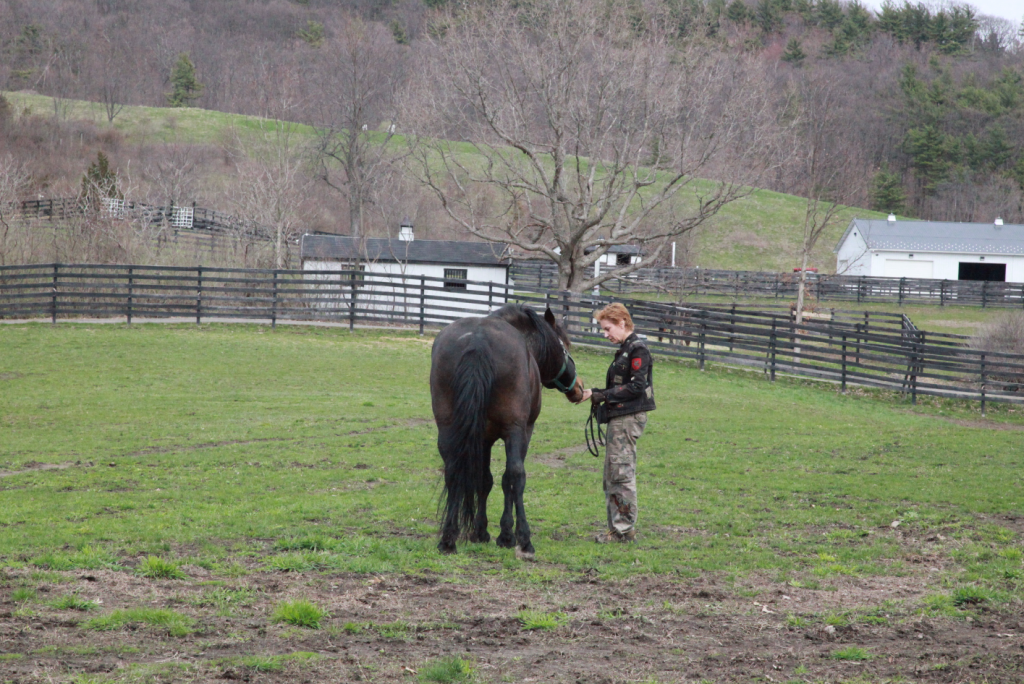 Sarah playing with her miniature horse, Chub
Sarah playing with her miniature horse, Chub
On Saturday we visited Sarah Hollis of Tintagel Andalusians in Westhampton, MA. Sarah is the owner of Escorial, the beautifully trained liberty horse that we have performed with for the past six years. She is also the most extraordinary, visionary and talented horse person I know.
Sarah, like many of us, is at an interesting, challenging crossroads with her work, due in part to the wild economic weather of the past four years. But here is the thing that I am seeing with myself and Sarah and a number of other friends.
The terror and the struggle has birthed a lot of new enterprise and imagination. I launched a blog, wrote a book, made new performance work and am about to launch a new website with a host of new offerings – teaching, coaching, writing, performance. Sarah is looking at the whole landscape of her work and digging deeper into her greatest passions: teaching and training. We are both looking to move in order to get ourselves closer to what will nourish us best.
Pam and I were talking to Jon Katz on Friday, and I said that I had recently gotten a blog post from Seth Godin about catastrophizing. Over the past few years I have gotten the feeling that I am hard-wired to catastrophize. That it is my nature It is who I am. Jon said that he sees this tendency in our economics and politics and personal lives as a failure of imagination. He is absolutely right. When i am in a state of terror, I cannot imagine or create anything.
I know this from my work with horses as well. When a horse is afraid, they cannot learn. They cannot do anything but flee or fight. That is why the positive reinforcement training strategies work so beautifully. They open space for communication, calming, relaxation, breathing.
I said earlier that the terror and struggle had birthed new enterprise. That is not exactly right. Before I could see my way to new creative endeavors, I had to do a lot of that calming, breathing work first. Sometimes I had to do it every minute or even every breath. I had to use a lot of different strategies, because if yoga or walking worked one day, it might be ineffective the next.
The point is that I have figured out some ways to stay, as Abraham says, “in the vortex,” or in a state of feeling good pretty much of the time. When the big rogue wave rises, I can duck dive and let it go by most of the time. I feel good about that.
This week Pam and I are going out to look at some properties. Leaning forward into whatever is to come next. We have a tentative name for our new home: Wild Rose Farm. It has a feeling of something old, something growing, something blooming, something wild. It has the feeling of home.
